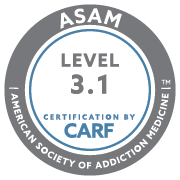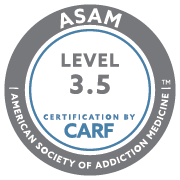By the time children reach adolescence, they will like have faced opportunities to use alcohol, tobacco, and other drugs, and these opportunities will continue to present themselves through young adulthood. Due to teens’ physical, social and emotional development, they are often more susceptible to abusing substances for a variety of reasons including stress, peer pressure, and injury. Understanding why teens are at special risk for substance abuse can help you identify and address these issues so that you can provide hope to a teen in need of the path to recovery.
- Teenagers’ Brains Make Them More Vulnerable to Addiction
Different drugs affect the brain differently, but they all raise the level of the chemical dopamine in brain circuits that control reward and pleasure. The “high” produced by drugs floods the brain’s reward circuits with much more dopamine than natural rewards generate and creates a strong drive to repeat the experience. As adolescents continue to use, the brain reinforces the neural links between pleasure and drug-taking, making the association stronger and stronger, and this can lead to substance abuse issues.
From early adolescence through early adulthood, the brain develops somewhat unevenly and the parts that develop first are those that control physical activity, emotion and motivation. The part of the brain that controls reasoning and impulses develops last, and this can cause teens to be prone to risk-taking. Hormones can also shift teens’ emotions into overdrive, leading to unpredictable – and sometimes risky – actions. Teens’ developing brains are also generally more prone to damage, meaning that experimentation with drugs and alcohol can have lasting, harmful effects on their health.
- All Teens Are Vulnerable to Substance Abuse
The common misconception that teenagers who experiment with drugs and alcohol are inherently “bad kids” couldn’t be further from the truth. Teens deal with an enormous amount of physical and emotional changes, stress to perform at school, sports and jobs, and pressure to fit in. Teens are also starting to transition to adult lives and adult problems and stresses. Like adults, kids might turn to drugs and alcohol to help them feel more confident or to bond with a social group that is known for using these substances. Teens also might turn to substances as a way to self-medicate if they are feeling anxious or depressed.
Many teens begin experimenting with drugs and alcohol simply because they are curious and don’t see the risk because they believe that nothing bad will happen to them. Teenagers are often overly stressed with a packed schedule of advanced classes and extracurricular activities and may turn to drugs or alcohol to handle stress or enhance their performance. Low self-esteem can also lead to self-destructive behavior. And, if there is a family history of drug addiction or alcoholism, teenagers may be genetically predisposed to experiment with drugs and alcohol and become addicted.
- Prescription Opioids Should Be Handled Carefully
Teenagers may first be exposed to opioids after a sports injury, wisdom teeth removal, or other health issue if they receive a prescription for pain killers. Teens who were first exposed to opioid painkillers after getting a prescription from dentists following care were more than ten times more likely than others in their age range to be diagnosed with opioid abuse within just one year of the prescription, according to a study. While these medications may well be necessary to treat teens’ pain, steps can be taken to prevent opioid misuse. Teens shouldn’t be encouraged to rely on opioids to help them make a quicker return to the playing field. And, teens should only use prescribed opioids as needed, in the lowest doses and most limited quantities. If teens no longer have pain that requires treatment, they should not finish their prescription. Parents can also ask what alternative pain treatment therapies may be available to avoid having their children take opioids altogether.
- Most Teens Get Their Drugs from Friends & Family
One of the easiest places for teens to find drugs and alcohol is in their own home. For persons aged 12 or older who used pain relievers non-medically, over half got the drug they used most recently from a friend or relative for free, a fifth received them through a prescription from one doctor and one in ten bought the drug from a friend or relative. The percentage of teens getting their drugs from drug dealers, strangers and the internet is less than 5%.
- People Are Most Likely to Begin Abusing Substances During Adolescence and Young Adulthood
By the time they are seniors in high school, almost 70 percent of students will have tried alcohol, half will have taken an illegal drug, nearly 40 percent will have smoked a cigarette, and more than 20 percent will have used a prescription drug for a non-medical purpose. Drug use at an early age is an important predictor of development of a substance use disorder later. The majority of those who have a substance use disorder started using before age 18 and developed their disorder by age 20. The likelihood of developing a substance use disorder is greatest for those who begin use in their early teens.
- Adolescent Treatment Needs Differ from Those of Adults
Adolescents are less likely than adults to report withdrawal symptoms when not using, being unable to stop using, or continued use of a drug in spite of physical or mental health problems. But, they are more likely than adults to report hiding their substance use, getting complaints from others about their substance use, and continuing to use in spite of fights or legal trouble. Adolescents may be less likely than adults to feel they need help or to seek treatment on their own as they may have experienced fewer consequences from their drug use and lack the ability to see their own behavior patterns that are contributing to their substance use. Adolescents seeking treatment for substance use problems often feel they do not need help, so engaging young patients in treatment often requires special skills and patience.
When substance use disorders are identified and treated in adolescence—especially if they are mild or moderate—they frequently give way to abstinence from drugs with no further problems. Relapse, if it occurs, should not be seen as a sign that treatment failed and the path to recovery can be strengthened by support from family members, non-drug-using peers, and school faculty.
The development of addiction is like a vicious cycle: Chronic drug use realigns teens’ priorities and also may alter key brain areas necessary for judgment and self-control, further reducing their ability to control or stop their drug use. This is why willpower alone is often insufficient to overcome an addiction. Drug use compromises the very parts of the brain that make it possible to “say no.”
Addiction is too powerful to overcome alone. If an adolescent or young adult in your life is struggling with substance abuse, there are people who can help. Seeking guidance from an established, reputable treatment center can provide the path to lasting recovery. Rimrock’s addiction specialists are available 24/7 by visiting rimrock.org or by calling 800-227-3953.
Sources:
https://drugfree.org/article/brain-development-teen-behavior/
https://jamanetwork.com/journals/jamainternalmedicine/article-abstract/2717503 https://www.justthinktwice.gov/facts/preventing-opioid-misuse-among-high-school-student-athletes-playbook-students





